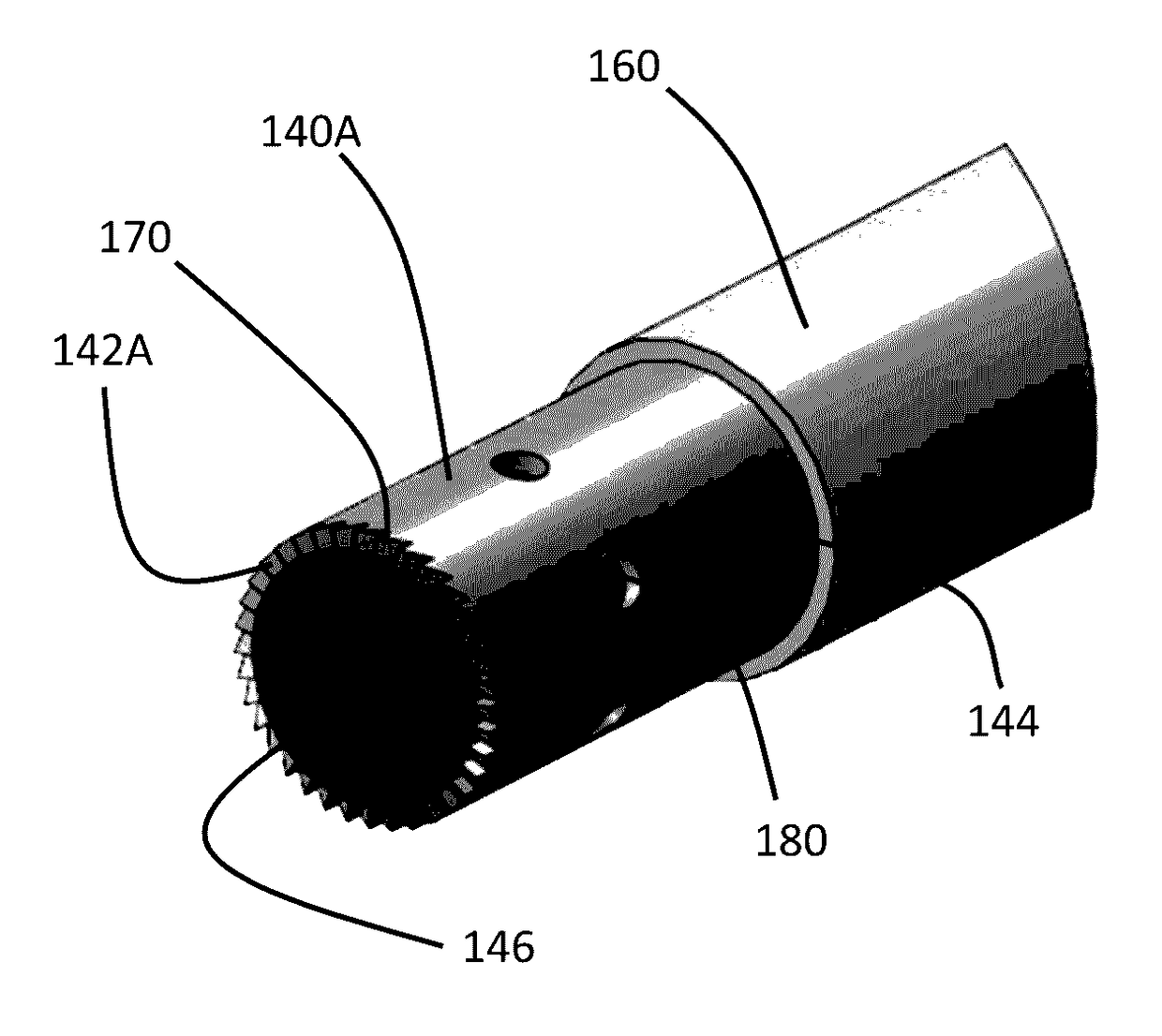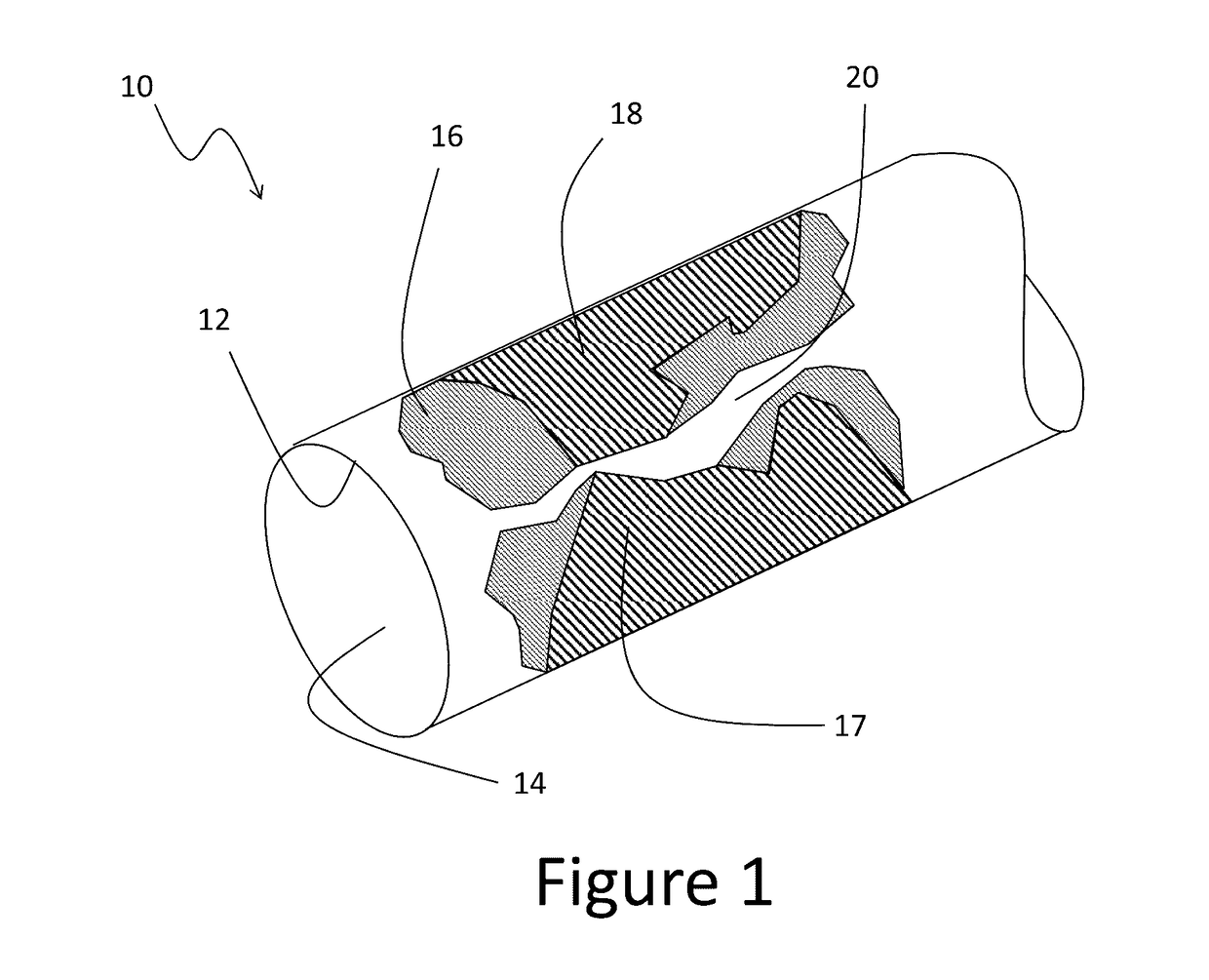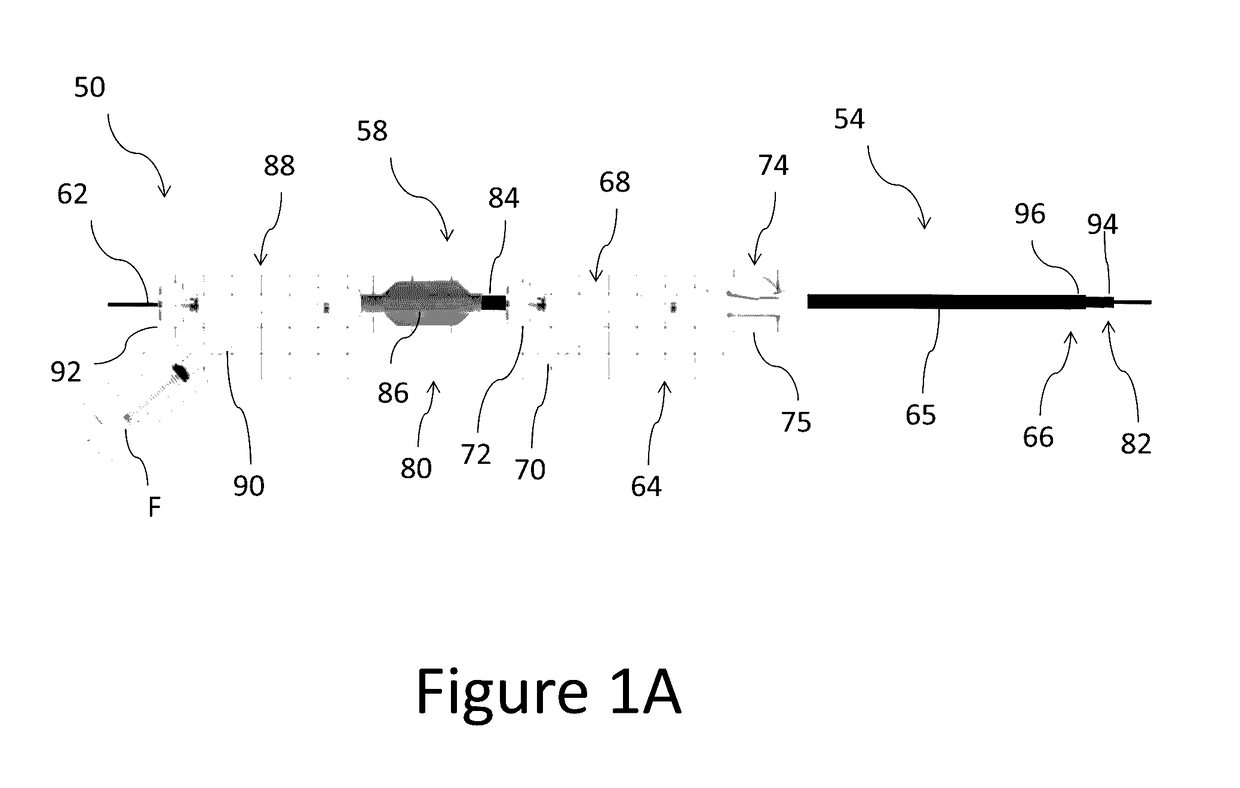Catheter devices for crossing and treating an occlusion
a catheter device and occlusion technology, applied in the field of system and method of treating occlusions, can solve the problems of collateral damage, drastic techniques are not available to patients with extensive occlusion of coronary and other critical arteries, and not all patients are successfully treated in this manner, so as to reduce the force needed, efficiently clear, and efficiently clear
- Summary
- Abstract
- Description
- Claims
- Application Information
AI Technical Summary
Benefits of technology
Problems solved by technology
Method used
Image
Examples
example 1
Treatment of In-Stent Restenosis
[0096]A 54-year-old male presented Stage IIb peripheral artery disease (PAD) arising from restenosis of a stent placed in the right common iliac artery four years earlier. A 0.035-inch diameter PTFE endovascular guidewire was inserted into the patient and advanced across the region of stenosis. A balloon catheter was then mounted onto the guidewire in an over-the-wire (OTW) configuration and advanced to the region of stenosis. The balloon catheter was unable to cross the target stenosis. The balloon catheter was withdrawn from the patient, and an embodiment of the clearing device 100 was mounted onto the guidewire in an OTW configuration. In this and the following examples, embodiments of the clearing device 100 were used. The embodiment of the clearing device 100 used to treat this patient had a 0.035 inch inner diameter and a leading edge outer diameter of 0.071 inch. As discussed above, the serrated tip was used to advance the catheter in resistanc...
example 2
Recanalization of the Superficial Femoral Artery
[0099]A 70-year-old male presented Stage IIb peripheral artery disease (PAD) arising from occlusion of the superficial femoral artery. Radiographic imaging indicated the occlusion affected a length of >25 cm of artery, with the patient having 95% truncus tibiofibularis stenosis. A 0.035-inch diameter endovascular guidewire was inserted into the patient and advanced across the region of stenosis. A balloon catheter was mounted onto the guidewire in an over-the-wire (OTW) configuration and advanced to the region of stenosis. The balloon catheter was unable to cross the target stenosis. The balloon catheter was withdrawn from the patient, and an embodiment of the clearing device 100 was mounted onto the guidewire in an OTW configuration. The embodiment of the clearing device 100 used to treat this patient had a 0.035 inch inner diameter and a leading edge outer diameter of 0.071 inch.
[0100]The clearing device 100 was advanced along the gu...
example 3
Treatment of Short Superficial Femoral Artery Occlusion
[0101]An 86-year-old male presented Stage IIb peripheral artery disease (PAD) arising from occlusion of the superficial femoral artery. Radiographic imaging indicated the occlusion affected a length of 100 was mounted onto the guidewire in an OTW configuration. The embodiment of the clearing device 100 used to treat this patient had a 0.035 inch inner diameter and a leading edge outer diameter of 0.071 inch.
[0102]The tip 140 of the clearing device 100 was moved to the target lesion by advancing the handle 130 distally along the guidewire. Once the distal face 142 of the tip 140 was in contact with the target lesion, the handle 130 of the clearing device 100 was gently pushed in the distal direction and rotated back-and-forth about the guidewire, causing the distal face 142 to gently abrade the target lesion. This method of lesion abrasion was continued until the tip 140 of the clearing device 100 had crossed the region of stenos...
PUM
 Login to View More
Login to View More Abstract
Description
Claims
Application Information
 Login to View More
Login to View More - R&D
- Intellectual Property
- Life Sciences
- Materials
- Tech Scout
- Unparalleled Data Quality
- Higher Quality Content
- 60% Fewer Hallucinations
Browse by: Latest US Patents, China's latest patents, Technical Efficacy Thesaurus, Application Domain, Technology Topic, Popular Technical Reports.
© 2025 PatSnap. All rights reserved.Legal|Privacy policy|Modern Slavery Act Transparency Statement|Sitemap|About US| Contact US: help@patsnap.com



